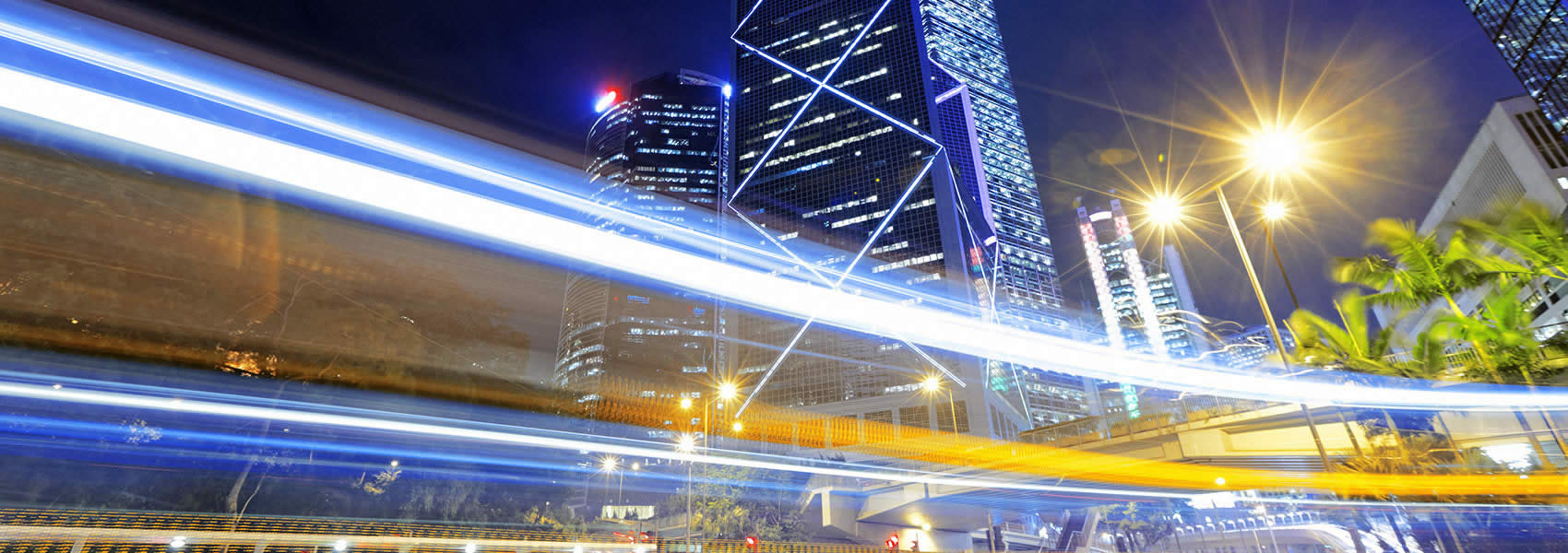

Drainage of extremely wet building ground
Special single channel impeller pumps with minimum solid size of 80 mm
bronze wheels
Industrial and waste water technology
Fresh, salt and waste water mixture
The MTR Corporation is currently building a new overground and underground high-speed rail network to improve the infrastructure linking up Hong Kong’s outlying districts and connect the center with the New Territories. The terrain is however extremely water-retaining, imposing heavy demands on planning and on the material and machinery used. Pumps made by HOMA are being installed on a total of five line sections to provide constant drainage and preserve the stability of the newly constructed routes. The liquids that have to be pumped away are particularly aggressive, necessitating the use of special materials such as bronze, e.g. for the impellers. HOMA’s modular system allows for many combinations of motors and hydraulic systems, facilitating flexible adaptation to local hydraulic parameters, to cope with unforeseen route changes for example. So far, 479 pumps by the German manufacturer have been installed. The project is due for completion by 2020.
The Mass Transit Railway (MTR) network at present includes nine tracks with a total length of 218 km, serving Hong Kong’s three main districts (Hong Kong Island, Kowloon and the New Territories) and making a connection to the Chinese mainland, to the province of Guangdong in particular, and to the Chinese continental high-speed rail network with its lines to Beijing and Shanghai. Five overground and underground line extensions, e.g. to lengthen the West Island Line by 3 km and the Kwun Tong Line by 2.6 km, are to be completed by the end of the decade. The new South Island Line, approximately 7 km long, will connect the MTR network with the Southern District on Hong Kong Island, and will combine several existing tracks over the 17 km of the Shatin to Central Link. At 26 km, the Hong Kong section of the Guangzhou-Shenzhen-Hong Kong Express Rail Link forms the longest extension. It constitutes the future connection to the Chinese high-speed rail network, running from West Kowloon in Hong Kong to the boundary of the special administrative region and on into the neighboring city of Shenzen in the province of Guangdong.
The extremely wet terrain, however, severely challenges the implementation of the various line sections, imposing heavy demands on planning and on the material and machinery used. The tracks have to be drained constantly to maintain the stability of the routes. Since absolute operational reliability in the pump units used for this purpose is of crucial importance, the MTR Corporation commissioned pump manufacturer HOMA to supply models specially adapted to the conditions on site. “We use single-rotor pumps with a minimum ball passage of 80 mm: besides handling solids outstandingly well, they also cover a wide useful hydraulic range”, says HOMA Export Manager Michael Markus, who is responsible for the MTR extension project. “This is made possible by our modular system, with its many combinations of motors and hydraulic systems.”
The modular concept allows HOMA to react flexibly to changes in hydraulic parameters and to organize its production process efficiently and economically. “Even small changes to the route or the location of a pumping station call for flexibility in varying the hydraulics of the pumps, because this is frequently associated with a change of operating point”, explains Markus. So, when pumps are called forward, they are redesigned and adapted to match the new operating point, i.e. motors and impellers are combined appropriately and the impellers are adapted by machining, if necessary, to reduce their delivery rate and delivery head simultaneously. If the delivery data are uprated, the options for combining the motor with larger impeller diameters, or perhaps even using a larger motor, have to be checked. This is not a problem, given the modular system of the pumps and the adaptability of, for example, the impellers. “Ideally, such changes can occasionally be offset by changing the assignment of machines to construction sections”, says Markus.
Since the liquid to be drained off is a mixture of fresh water, brine and sewage, and is consequently as aggressive in effect as brackish water, special materials such as bronze are also required for the rotating parts. “For this project, we have used this alloy for the impellers, for example, as well as sealing materials with an extreme ability to withstand stress”, says Markus.
A further decisive factor favoring the award of the project to HOMA was the MTR Corporation’s requirement for the quality and reliability of all units. Representatives of the client satisfied themselves of that personally by making works visits and regularly accepting pumps at the works. The logistical aspect of HOMA’s task is also very demanding. “With large projects of this kind that involve a considerable proportion of underground construction, building construction and also, in this case, tunnel construction, changes or delays in the progress of the building work frequently mean that large machine groups are called forward, produced and occasionally stopped again, or that technical modifications have to be made”, says Markus. For HOMA, this necessitates just-in-time production and delivery, and consequently very precise and far-sighted planning of the acquisition and provision of materials and the manufacturing process. “Where possible, therefore, we are implementing production in stages that permit us to make the appropriate changes.”
Another factor in the decision by MTR Corporation to accept HOMA, besides special technical requirements, was above all the local technical support provided during the planning stage by HOMA’s partner on site, HAUKEN Engineering Co., Ltd. “HAUKEN is also providing the after-sales service that is required in such comprehensive public transportation projects”, says the Project Manager. The construction of all the railway line sections is due for completion by 2020. So far, 479 pumps by HOMA have been installed.